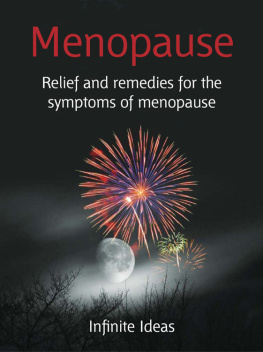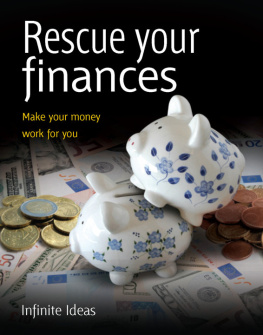Go green!
Shortcuts to a healthier world
Infinite Ideas
Previously published in paperback as Rescue our world

8. Powered up
All utility services are not equal some are much greener than others. Where does your power come from?
If you switch on a light and then feel a pang of guilt about the associated emissions, now might be the time to switch your electricity to a green supplier. Green energy can be loosely defined as energy from renewable or sustainable sources for instance, wind power, solar energy, biomass energy and small-scale hydro power.
There is plenty of choice for green electricity but that doesnt mean they are all good choices. As a result of confusing information and unverifiable claims by suppliers, consumers may not be making the positive contribution they had hoped for. Even Friends of the Earth has withdrawn its online rating system for green energy suppliers.
At the moment, opting for a green tariff tends to mean one of three things: 1) green source electricity, where an energy supplier will guarantee to buy, from a renewable generator, a percentage of electricity to match every unit of electricity used by the customer; 2) green fund tariffs designed to support the building of new renewable sources of electricity, environmental causes or new research and development projects; and 3) carbon offset tariffs, which help reduce or offset the carbon dioxide emissions or carbon footprint of the customer.
An ethical power supplier such as Ebico charges all its customers the same price regardless of how they pay. It uses the income generated by direct debit customers to bring down prices for pre-pay and quarterly consumers. Pre-pay customers will see much lower prices, while direct debit payers will still get competitive prices, plus the knowledge they are helping to improve social justice.
You should also remember that even if you are buying green electricity, it is important not to waste power by being as energy efficient as possible a kilowatt not used is the cleanest kilowatt of all!
Heres an idea for you
Save yourself a lot of hassle by accessing a website such as www.uswitch.com that will help you switch supplier without having to lift a finger yourself. You can then opt for a supplier that prioritises environmental concerns and offers cleaner energy. The switching service will arrange the transfer free of charge, including severing the link to your existing company, so you can be getting greener power within days.
Defining idea
Global warming is one of the most important issues facing all of humanity.
LEONARDO DICAPRIO
9. Low-impact DIY
We love to add the final decorating touch to our homes, but make sure you choose the least toxic materials.
Of course we all want our houses to look fabulous, but perhaps its time to start taking more care on the home front: some chemicals and materials that come with the fix-up fetish are major pollutants. Take MDF, or medium density fibreboard, made from wood fibres glued together. It contains formaldehyde, which is an irritant and probable human carcinogen. Cutting and drilling MDF generates fibrous dust that you definitely shouldnt inhale. Ideally replace MDF or particleboard with wheat board, produced from agricultural waste wheat straw and a harmless soy flour binder.
Its not just MDF that releases volatile organic compounds (VOCs) into the air: solvent-based paints, adhesives, flooring, particleboard, and many other building products let off gas, too. That fresh paint smell is the calling card of chemicals that can cause headaches, allergic reactions, nausea and tiredness. Many DIY stores now sell paints, varnishes and sealers with minimal or low VOC content so always check the tin before you buy, or better still choose water-based products or less toxic alternatives.
Think about other materials you are using as you fit out your home, and especially avoid those that off-gas, such as plastic or PVC, and whose manufacturing process is highly toxic. Restore rather than replace wherever you can, and use building products made from recycled materials, or reclaimed building materials. You could fit reconstituted doors made of recycled hardboard from lumber mill shavings, which are easy to care for and have good heat insulation.
Only buy as much material as you need for the job, especially paint which doesnt keep well. Dont throw away your white spirit after use as it contaminates the water supply. Let it stand so the sediment can fall to the bottom, then pour off the clean spirit and reuse it. When cleaning water-based paint from brushes and rollers, scrape as much paint as possible onto sheets of newspaper before washing them to minimise the amount of paint flushed down the drain.
Heres an idea for you
Trust your nose to sniff out the difference between natural paint and hydrocarbon-based paints. One whiff will tell you which one contains strong chemicals. Natural paints dont let off VOCs, are a pleasure to use and can be composted after use to complete the ecological cycle. Ditch the usual petrochemical soup and youll also reduce your carbon footprint.
Defining idea
Creativity is the ability to introduce order into the randomness of nature.
ERIC HOFFER
10. Read the label
However it comes, itll have a label to go with it. Get informed on whats inside your day-to-day household products.
Are we living in a toxic timebomb? Nobody really knows, but you can cut back on household chemicals by learning about the worst offenders. Its almost impossible to be 100% green, but the main thing is to be aware, so at least you have the choice. Get into the habit of reading product labels and swapping those that contain toxic stuff for greener alternatives.
Heres a list of the worst culprits to look out for:
- Artificial musks, which are used in many toiletries and cleaning products. Usually described as parfum or fragrance on labels, they are bioaccumulative contaminants in the environment.
- Bisphenol A, a hormone-disrupting chemical found in some polycarbonate plastic, is used for baby feeding bottles, refillable water bottles, food containers, CDs and DVDs and electrical appliances.
- Brominated flame retardants (BFRs) are found in plastics, textiles, furniture and electrical appliances, and are suspected hormone disrupters.
- Parabens are preservatives found in most cosmetics. They have also been found to mimic oestrogen and have been detected in breast cancer tumours. They are known skin and eye irritants, and have also been linked to sperm damage in males.
- Phthalates are added to PVC plastics to make them pliable, and to a wide range of cosmetics. They are associated with liver, kidney and testicular damage.
- Triclosan is a strong antibacterial used in toothpastes, mouthwashes, soaps, deodorants, dish cloths and chopping boards. There are claims that its widespread use is leading to risks to the environment and human health.
Heres an idea for you
The garage is often a dumping ground for hazardous materials such as old paints, thinners, adhesives, car oil, methylated spirits and car batteries. Get into the habit of having a regular clear out, and go through each tin or bottle to check exactly what it contains. Ask your local authority for advice on disposing of chemical-based products.
Defining idea
Feelings are like chemicals; the more you analyse them the worse they smell.
CHARLES KINGSLEY
11. Green consumers
Ever get the feeling that youre on a consumption treadmill? Jump off now, and join the new breed of consumer.
The eco-movement has spawned a whole new vocabulary, and one of the buzzwords is freegan (free + vegan). Dining on food leftovers from dustbins may have once been the preserve of tramps, but for some it is now more of a lifestyle choice. Greener-than-thou freegans veer away from consumerism and instead scavenge around to meet their needs, including finding food thrown out by shops and restaurants. And why not? Supermarkets simply dump five per cent of their food, most of it completely fit for consumption.
Next page

















